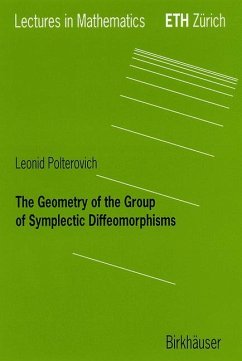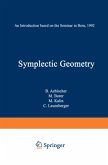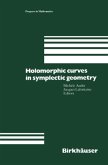The group of Hamiltonian diffeomorphisms Ham(M, 0) of a symplectic mani fold (M, 0) plays a fundamental role both in geometry and classical mechanics. For a geometer, at least under some assumptions on the manifold M, this is just the connected component of the identity in the group of all symplectic diffeomorphisms. From the viewpoint of mechanics, Ham(M,O) is the group of all admissible motions. What is the minimal amount of energy required in order to generate a given Hamiltonian diffeomorphism I? An attempt to formalize and answer this natural question has led H. Hofer [HI] (1990) to a remarkable discovery. It turns out that the solution of this variational problem can be interpreted as a geometric quantity, namely as the distance between I and the identity transformation. Moreover this distance is associated to a canonical biinvariant metric on Ham(M, 0). Since Hofer's work this new ge ometry has been intensively studied in the framework of modern symplectic topology. In thepresent book I will describe some of these developments. Hofer's geometry enables us to study various notions and problems which come from the familiar finite dimensional geometry in the context of the group of Hamiltonian diffeomorphisms. They turn out to be very different from the usual circle of problems considered in symplectic topology and thus extend significantly our vision of the symplectic world.
Hinweis: Dieser Artikel kann nur an eine deutsche Lieferadresse ausgeliefert werden.
Hinweis: Dieser Artikel kann nur an eine deutsche Lieferadresse ausgeliefert werden.








